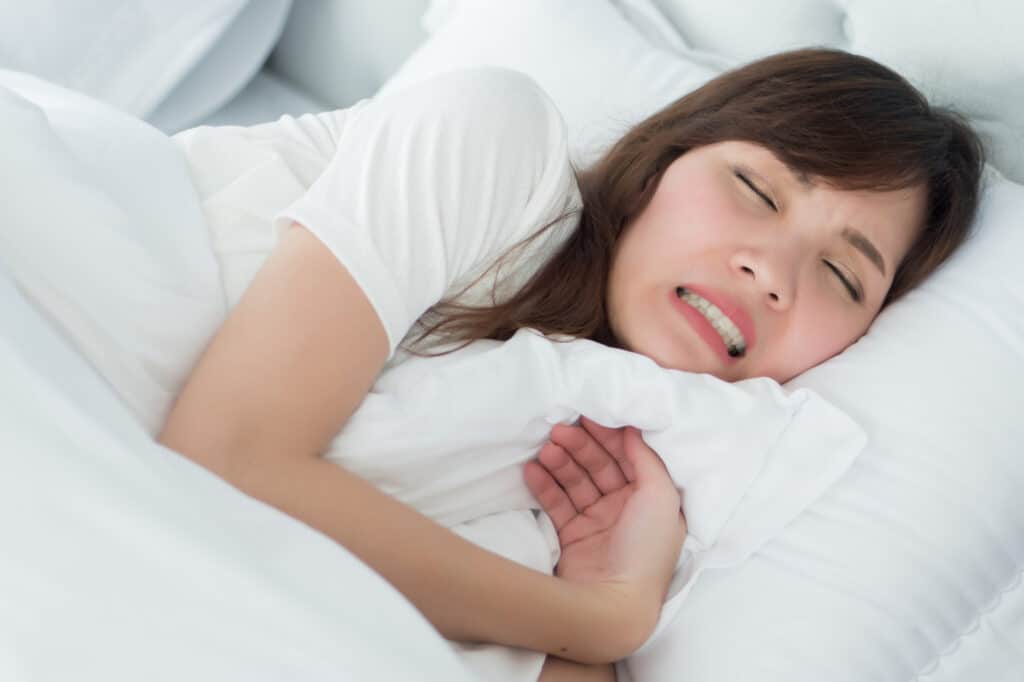
Bruxism, or teeth grinding, is a condition that involves the grinding, clenching, or gnashing of teeth together. Awake bruxism is when a person clenches their teeth during waking hours while sleep bruxism is when teeth are gnashed while a person is sleeping.
Mild cases of bruxism may require little treatment, if any. More severe cases, however, can lead to tooth damage, jaw disorders, as well other problems.
Because sleep bruxism is hard to detect until complications arise, the warning signs should be known in order for a patient to seek relevant dental care. Dr. Helen Ragsdale of Austin Laser Dentist is prepared to help a patient with diagnosis if they exhibit symptoms of bruxism.
Symptoms
Symptoms of bruxism can include:
- Teeth grinding that is loud enough to wake others
- Chipped, fractured, or damaged teeth
- Tooth enamel that is worn away, exposing underlying dentin
- Tight jaw muscles or a locked jaw that cannot open
- Popping or clicking in the temporomandibular joint (TMJ)
- Headaches
- Damage to the inside of the cheek
- Headaches
Because other conditions share many of the same symptoms with bruxism it is important to see a dental professional for proper diagnosis and treatment.
Common Causes of Bruxism
It is believed teeth grinding is caused by a combination of physical, psychological and genetic factors. Some of these factors include:
- Stress. Increased stress levels in the body can lead to teeth gnashing and grinding.
- Personality type. Individuals with nervous tension, overly aggressive or competitive behavior can be at increased risk for bruxism.
- Genetics. Incidents of bruxism increase in families that have a history of the condition.
- Medications. Bruxism has been known to be a common side effect of some medications such as antidepressants.
- Other substances. Tobacco, caffeine, alcohol, and recreational drugs can increase the risk of bruxism.
Diagnosing Bruxism
During regular checkups a dental provider will examine teeth for signs of bruxism. Those signs include chipped teeth or teeth with flattened tips. If teeth grinding is suspected a dental provider will re-examine those symptoms in subsequent checkups to determine whether the condition is progressing and whether a treatment regimen is needed.
Treatment for Bruxism
In most cases bruxism can be successfully treated. The line of treatment will depend on a patient’s age, overall health and medical history, and preferences.
Dental Treatment
If a patient is diagnosed with bruxism, the dental professional will suggest ways to preserve his dental health.
One common treatment for bruxism is a splint or mouth guard. These are designed to keep teeth separated in order to avoid the damage caused by bruxism. They can be constructed of hard materials (such as acrylic) or soft materials, and can fit over upper or lower teeth.
In cases where damage to teeth has progressed, such as when tooth damage has led to increased sensitivity or the inability to chew properly, a dental professional may need to reshape the surfaces of a patient’s teeth or use crowns to repair the damage.
Behavioral Changes
Other treatments for bruxism can include behavioral changes. The patient may be taught how to rest their tongue, teeth, and lips properly, for example.
Some methods of mediation used to promote relaxation can help. If the bruxism is induced by anxiety, talking to a therapist or a counselor may be recommended.
Biofeedback can also be used to help treat bruxism. Electronic instruments can be used to alert a patient of the amount of muscle activity in the mouth and jaw. The instrument signals the patient when there is too much activity so the behavior can be altered.
Bruxism Relief in Austin, TX
Whatever the cause, Dr. Ragsdale and her team can guide you through the diagnosis process and help you find a treatment plan that is best for you. Call (512) 346-4690 or use our contact page to conveniently schedule an appointment today.
